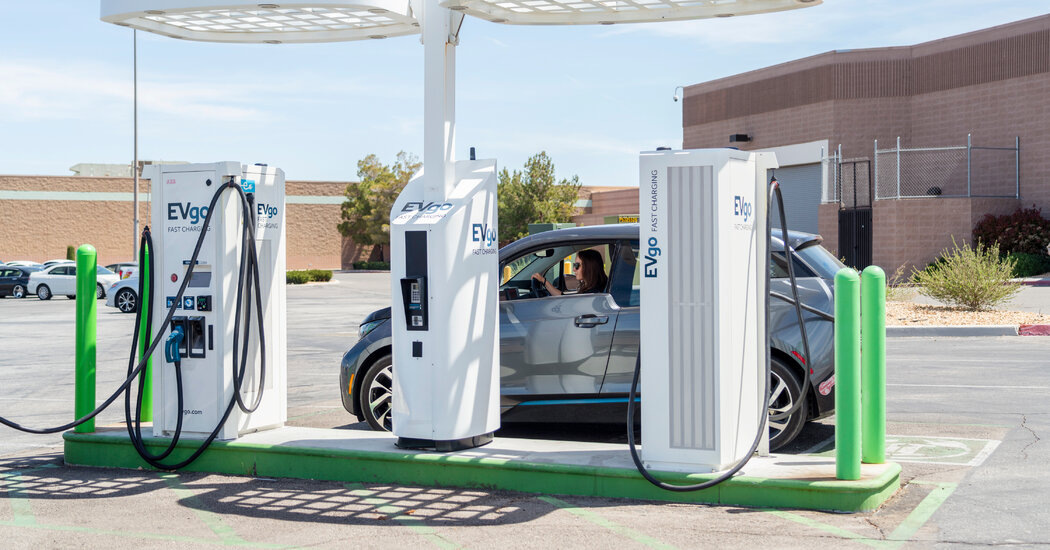The Biden administration proposed ambitious auto emissions rules on Wednesday that could significantly change the types of cars and trucks for sale in the United States, but not immediately.
If implemented, the regulations will effectively require automakers to replace fossil fuel cars with electric vehicles, starting with cars for the 2027 model year as part of President Biden’s larger effort to address climate change. Ultimately, the government wants two-thirds of all new cars sold in the country to be zero-emission by 2032.
The proposal, submitted by the Environmental Protection Agency, is likely to accelerate the transition to electric cars that is already underway. It is also sure to create a lot of confusion for people who drive but do not closely follow the automotive industry and emissions regulations.
What do the new fuel emissions rules mean for me as a driver and car buyer?
Even if adopted as proposed, the rules will not have a major impact on consumers for years to come. The rules won’t force Americans to buy a new car or sell the one they own now, and car dealerships will still sell models similar to the vehicles people are used to driving.
That will change in 2027, when the government sets stricter standards for the emissions of cars and trucks. Over time, car manufacturers will discover that the only way they can meet these stricter regulations is to sell more electric cars, which emit no exhaust fumes, and fewer conventional combustion engine cars.
Is now a good time to buy an electric car?
That depends on your circumstances.
For much of the past two decades, electric cars only appealed to affluent early adopters or people deeply committed to protecting the environment. The vehicles available were usually luxury models that cost much more than comparable petrol vehicles or were very small. The cars couldn’t go very far before needing to be charged, and it can be incredibly difficult to find a place to plug them in.
But that has changed a lot lately. Tesla, Ford Motor, and other automakers have recently cut prices on battery-powered models, such as the Model 3 and Mustang Mach-E, and some now cost less than, or nearly so, comparable gasoline models. General Motors and other companies will introduce even less expensive models this year, such as an electric Chevrolet Equinox SUV that is expected to start around $30,000. And many electric models can comfortably drive 200 miles or more before charging.
Electric vehicles are generally cheaper to run because the electricity required to move them usually costs less than the equivalent amount of gasoline. They are also cheaper to maintain.
What happens to federal tax credits for electric cars?
Electric cars assembled in the United States are currently eligible for a $7,500 federal tax credit, but the rules for those incentives change Tuesday. A certain percentage of the components and minerals in vehicle batteries will have to come from North America or from countries with which the United States has a trade agreement.
Electric vehicles assembled in Germany, Japan, South Korea and other countries are not eligible. The government also limits eligibility based on how much a car, truck or SUV costs and how much individuals and couples earn in a year.
I can’t find an electric vehicle that meets my needs. Are there other options?
Some people will probably conclude that an electric car is not right for them for the time being. They may need a pickup truck that can haul heavy loads and trailers over long distances – something that today’s battery-powered trucks aren’t very good at. Or they live in apartments or rental properties where they can’t install a dedicated electric vehicle charger and there aren’t many public chargers around.
In such situations you could consider hybrid or plug-in hybrid cars without making the full switch to an electric car. Many car manufacturers offer hybrids, which have a combustion engine, a battery and an electric motor. These cars are usually more expensive than conventional vehicles, but owners can recoup that higher cost by saving fuel. How much you have to drive to move forward depends on the model.
One thing to keep in mind is that electric vehicle technology is changing rapidly and industry experts believe that these cars will only get better and more affordable. So your best option might be to give it a few more years with the car you drive until you see a battery-powered model that makes sense to you.

